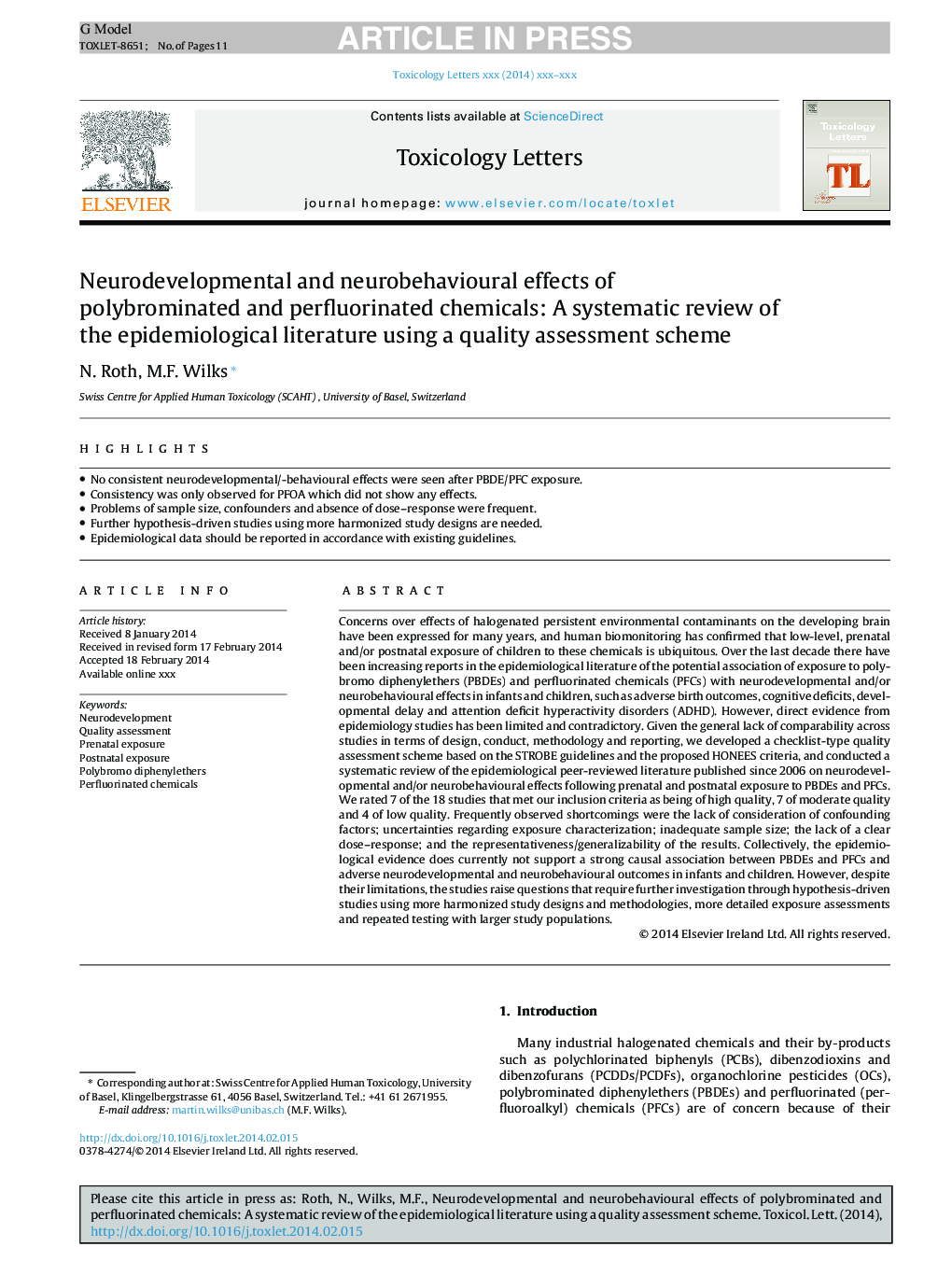| کد مقاله | کد نشریه | سال انتشار | مقاله انگلیسی | نسخه تمام متن |
|---|---|---|---|---|
| 5860185 | 1133169 | 2014 | 11 صفحه PDF | دانلود رایگان |
عنوان انگلیسی مقاله ISI
Neurodevelopmental and neurobehavioural effects of polybrominated and perfluorinated chemicals: A systematic review of the epidemiological literature using a quality assessment scheme
ترجمه فارسی عنوان
اثرات نوروپاتولوژیک و عصب شناختی مواد شیمیایی پلیبرومینده و پرفروفی شده: بررسی سیستماتیک ادبیات اپیدمیولوژیک با استفاده از یک طرح ارزیابی کیفیت
دانلود مقاله + سفارش ترجمه
دانلود مقاله ISI انگلیسی
رایگان برای ایرانیان
کلمات کلیدی
توسعه عصبی، ارزیابی کیفی، قرار گرفتن در معرض پیش از قاعدگی قرار گرفتن در معرض پس از زایمان، دیفنیلترهای پلیبروم، مواد شیمیایی فلوئورید،
موضوعات مرتبط
علوم زیستی و بیوفناوری
علوم محیط زیست
بهداشت، سم شناسی و جهش زایی
چکیده انگلیسی
Concerns over effects of halogenated persistent environmental contaminants on the developing brain have been expressed for many years, and human biomonitoring has confirmed that low-level, prenatal and/or postnatal exposure of children to these chemicals is ubiquitous. Over the last decade there have been increasing reports in the epidemiological literature of the potential association of exposure to polybromo diphenylethers (PBDEs) and perfluorinated chemicals (PFCs) with neurodevelopmental and/or neurobehavioural effects in infants and children, such as adverse birth outcomes, cognitive deficits, developmental delay and attention deficit hyperactivity disorders (ADHD). However, direct evidence from epidemiology studies has been limited and contradictory. Given the general lack of comparability across studies in terms of design, conduct, methodology and reporting, we developed a checklist-type quality assessment scheme based on the STROBE guidelines and the proposed HONEES criteria, and conducted a systematic review of the epidemiological peer-reviewed literature published since 2006 on neurodevelopmental and/or neurobehavioural effects following prenatal and postnatal exposure to PBDEs and PFCs. We rated 7 of the 18 studies that met our inclusion criteria as being of high quality, 7 of moderate quality and 4 of low quality. Frequently observed shortcomings were the lack of consideration of confounding factors; uncertainties regarding exposure characterization; inadequate sample size; the lack of a clear dose-response; and the representativeness/generalizability of the results. Collectively, the epidemiological evidence does currently not support a strong causal association between PBDEs and PFCs and adverse neurodevelopmental and neurobehavioural outcomes in infants and children. However, despite their limitations, the studies raise questions that require further investigation through hypothesis-driven studies using more harmonized study designs and methodologies, more detailed exposure assessments and repeated testing with larger study populations.
ناشر
Database: Elsevier - ScienceDirect (ساینس دایرکت)
Journal: Toxicology Letters - Volume 230, Issue 2, 15 October 2014, Pages 271-281
Journal: Toxicology Letters - Volume 230, Issue 2, 15 October 2014, Pages 271-281
نویسندگان
N. Roth, M.F. Wilks,
